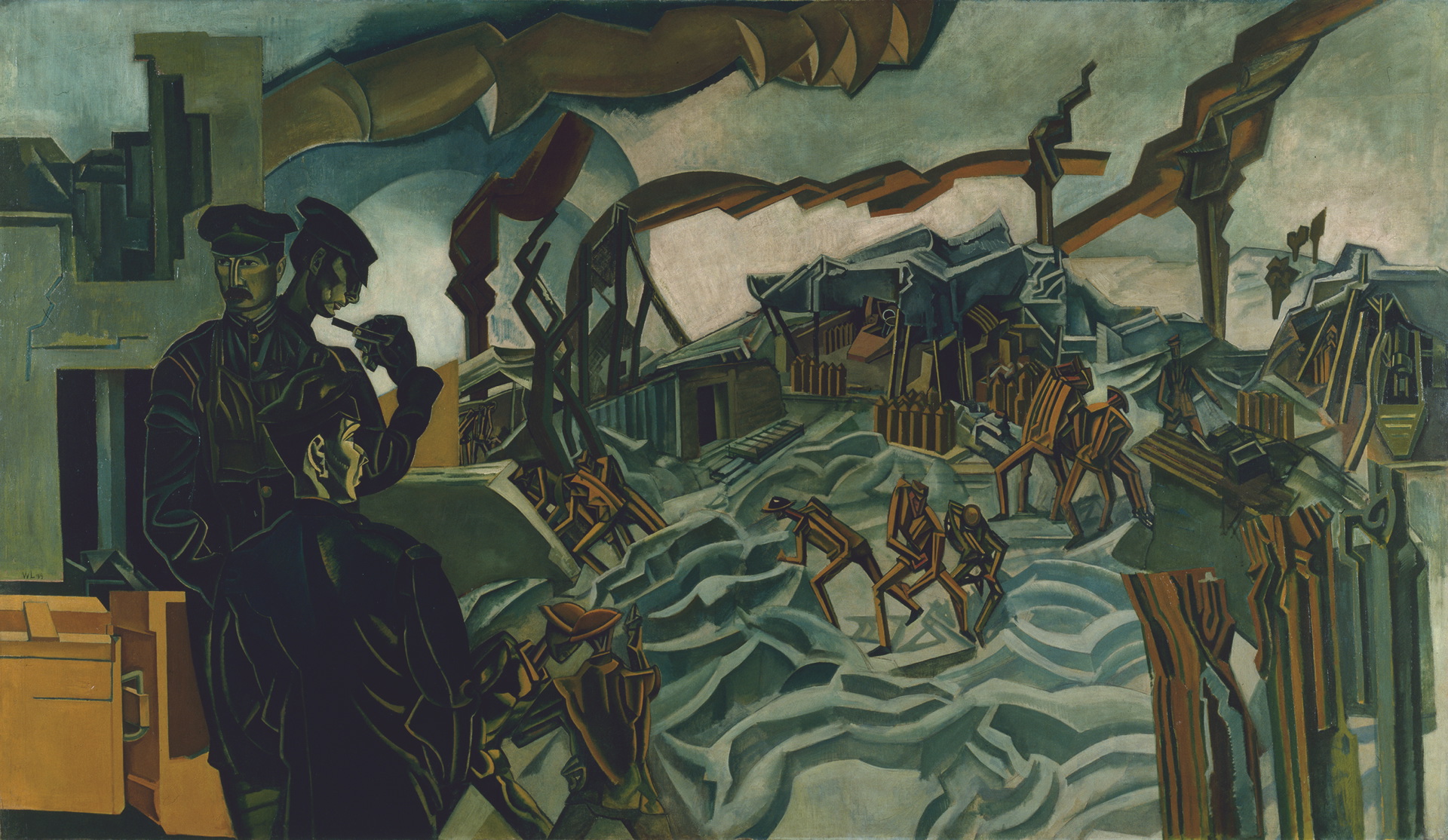Preview:
Wyndham Lewis
He was a maverick who shunned the art establishment but produced spectacular and moving first-hand depictions of war and founded Britain’s only true avant-garde movement
Although Wyndham Lewis’s upbringing may resemble that of the archetypal society artist – privileged childhood, schooled at Rugby prior to studying at the Slade School of Art – little could be further from the truth. Every inch the iconoclast, Lewis founded what many see as Britain’s only true avant-garde movement, Vorticism, fell out spectacularly with contemporaries and patrons alike, became a war artist while fighting on the Western Front during the First World War and published several belligerent books and journals before a tumour rendered him blind six years before his 1957 death.
“He was certainly a difficult character,” says Richard Slocombe, with understatement. “And the architect of much of his own misfortune.”
Curating Wyndham Lewis: Life, Art, War for Manchester’s Imperial War Museum North, Slocombe, the museum’s senior historian, has encapsulated the turbulent life of this Canadian-born, London-raised maverick.
An example of it was his relationship with the esteemed Camden Town Group, the collection of English post-impressionists operating around 1910. “Lewis could see the advantage of being involved with this leading art group but, once inside, he viewed what they were doing as passé and soon began to openly parody them.”
His relationship with the Bloomsbury Set, that upper-middle class intellectual aristocracy of artists, philosophers, writers and poets, took a similar turn.
“Again, he identified the benefits of being associated with these influential people but soon went on record accusing them of being nothing more than privileged amateurs with a Victorian sensibility. Of course Lewis regarded them as cowards for being pacifists and not enlisting for the war.”
On and on Lewis went, consistently destroying anything that appeared to be aiding his career. But his work continued to make its mark on society with the Vorticism movement he founded, using a style of geometric abstraction taken from Cubism and Futurism, remaining influential today. His paintings produced while working as official war artist on the Western Front are spectacular, brutal and moving.
“Radical young artists such as Lewis were seen as relevant as they were part of the generation who were sacrificing themselves,” says Slocombe. “His work was viewed as a valid thing to produce, a means of calibrating this unprecedented war for future generations and providing an authentic vision from someone who was actually fighting in the fields.”
A number of these war paintings – including the monumental A Battery Shelled – will be displayed as part of the exhibition, alongside Vorticist work, drawings, examples of his journal Blast, written work produced while Lewis was critic for the BBC’s Listener magazine and a Movietone news clip relating to the furore surrounding his 1938 portrait of TS Eliot.
“It was rejected by the Royal Academy, which, to be honest, wasn’t a surprise as he had basically already annoyed everyone who was part of the art establishment,” says Slocombe. “This was almost the final confirmation of his isolation.”
Wyndham Lewis: Life, Art, War, Imperial War Museum North, Manchester, until 1 January.
